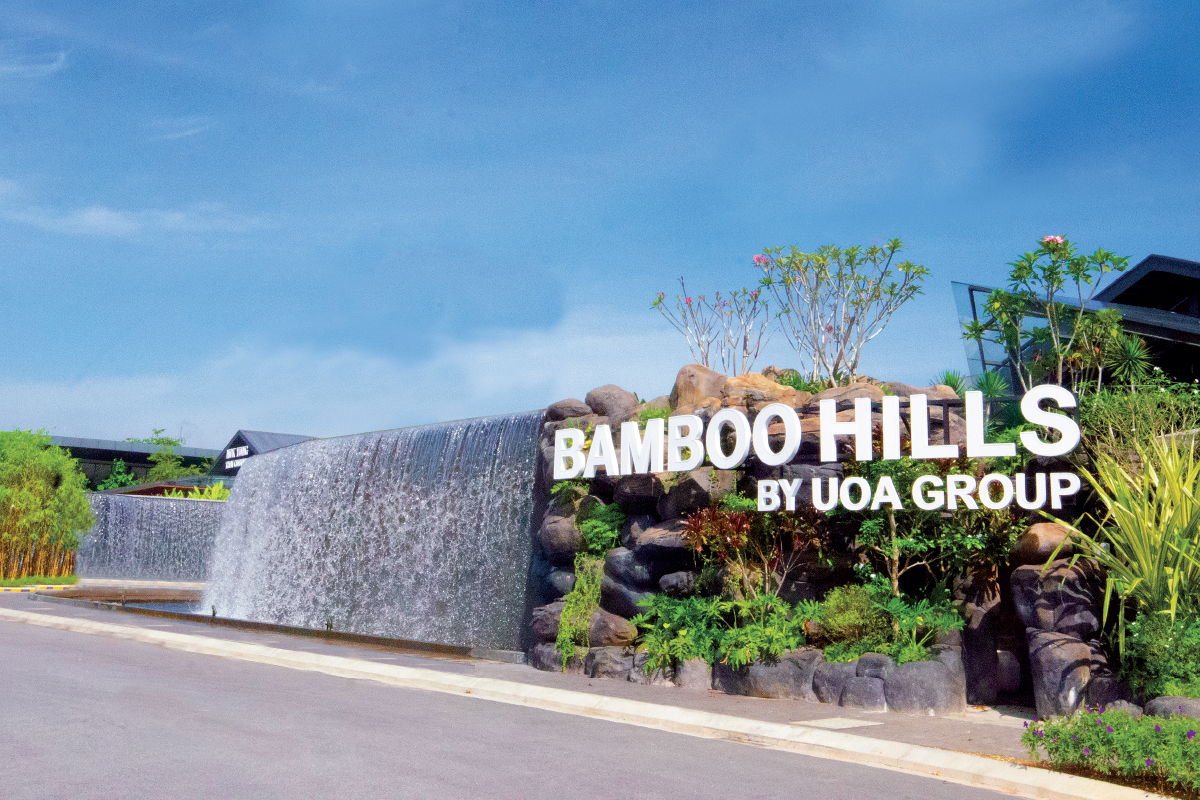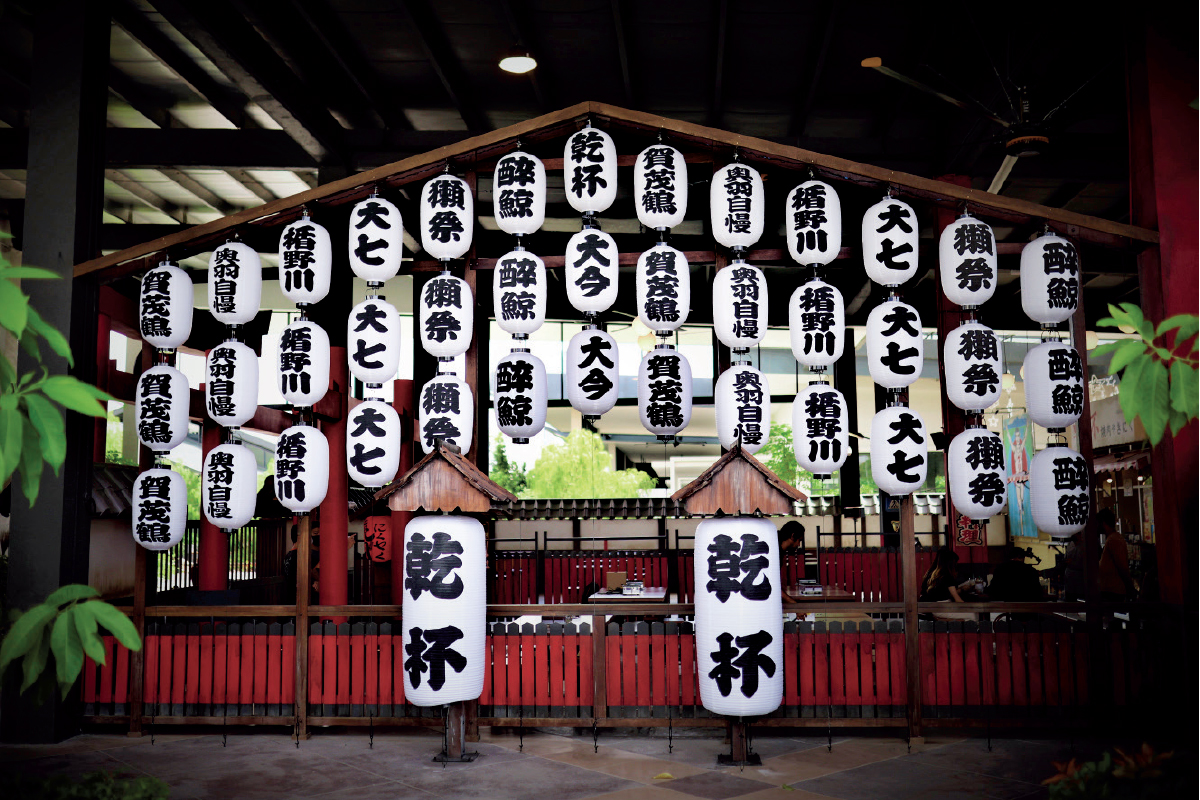
This article first appeared in City & Country, The Edge Malaysia Weekly on February 27, 2023 - March 5, 2023
Entering UOA Development Bhd’s latest project, City & Country is greeted by “Bamboo Hills” emblazoned at its entryway. The hidden oasis unfurls within, complete with trimmed hedges and lawns, willowy bamboo and sublime ponds and waterfalls.
Although situated along the busy Duta Ulu-Kelang Expressway near the Kuala Lumpur city centre, Bamboo Hills is calm and peaceful. In the food component, F&B outlets have opened in 11 pavilion-style lots and open-air walkways; they appear to be doing good business on our visit one late morning in the middle of the week, with trendy patrons having their coffee and fancy brunches, and eagerly taking pictures for their social media feeds.
Bamboo Hills is an extension of the group’s brand DNA, which focuses on forward-looking urban developments that interweave sustainability and greenery. The 27-acre mixed-use development will comprise several residential towers as well as commercial and retail components with a total estimated gross development value (GDV) of RM6.1 billion. The food and lifestyle component takes up 16 acres, with its first F&B outlet unveiled last September, followed by five others.
“Our aim is for visitors and residents of Bamboo Hills to feel transported into another tranquil location, away from the busyness of the city,” remarks UOA Development managing director C S Kong as he settles into his seat in one of the new F&B offerings, Botanica+Co.
“We would like to showcase Bamboo Hills as the next gastronomic destination in the city before going into the other components in the development. Our strategy is slightly uncommon, but it is our way of offering our buyers and investors a thriving destination to leverage on,” says the affable Kong.
He is confident that Bamboo Hills will be a tourist attraction in the long term. “Many wondered why a developer like us would transform part of this piece of land into a food and lifestyle component … it takes a long time for us to plan the saleable area and at least 20 years to complete the project, so instead of leaving the land empty, why not turn it into a food destination, and create a buzz?
“Both locals and foreigners, especially Asians, visit KL for the food and ambience. As a Malaysian, I thought I needed to do something to appeal to them … a good example is Dempsey Hill in Singapore, which is known as a food destination. The feedback for Bamboo Hills has been excellent. I even have good friends from abroad visiting and raving about it to me,” he quips.
Bringing communities together
Kong hopes that the food and lifestyle component at Bamboo Hills will make the area popular “and give people a chance to get to know Bamboo Hills better”. “We spent RM70 million on this component, and it would take many years just to get back the capital, not considering interest. But, we believe in creating value for the development, and we hope the value of the project will increase in time to come.”
He admits to taking a risk and was apprehensive that the food component would only attract the lunch crowd, but he has been proved wrong, so much so that car park spaces are always full. “It was sheer hard work for our team to put together a list of restaurants and to be able to convince the retailers to open their food outlets here.”
Kong describes Bamboo Hills as “a place created with the intention to bring communities together with its vibrant and exciting new offerings — a place where you can relax and enjoy an eclectic mix of unique dining experiences amidst lush green surroundings”.
He adds that the food and lifestyle component will serve as an ever-changing backdrop to the other components of Bamboo Hills “as we will continue to introduce new and interesting concepts to suit current and future lifestyle preferences”.
“It depends on what is relevant at the time. For example, at one point, co-working spaces were in high demand, but now they are slowly phasing out. We strive to evolve [with Bamboo Hills] in the next 20 years, based on demand and trends. A proposed medical component may be added as well.”
Kong reveals that the group will unveil its first residential component in mid-2023. “We are still finalising the details, depending on the market conditions. The commercial component will be a supporting element for the residential one,” he says.
“Ultimately, our target market for Bamboo Hills is those who appreciate green spaces, open spaces and conveniences, with our catchment being KL and other surrounding areas,” he highlights.
The food component boasts of established and up-and-coming retailers that include Botanica+Co, Tap Room, Kampai Yakiniku, Ginger, Nok Yung and Starbucks. The development has just unveiled an events space called Astana in an A-shaped glass house. “We have held a few weddings, registrations of marriage, and events at our retailers here, and our new event space, Astana, will be able to hold up to 80 pax. In the future, we expect to host more parties and product launches,” says Kong.
Bamboo Hills also has a local urban farm run by Homegrown Farms. The farm supplies freshly picked organic vegetables and herbs directly to the F&B establishments.
With the development located between Jalan Ipoh and Jalan Kuching and near MRT Kentomen Station, “it is easy for guests to visit”, notes Kong.
With its liveliness, reception and high footfall, it is easy to see why the component is fast becoming the talk of the town.
Plans for FY2023
According to Kong, there has been minimal challenges as people are excited about Bamboo Hills. “This project will be one of our main focuses for FY2023,” he says. “We are quite confident that despite existing market challenges, the real estate market will perform better this year, especially with the new unity government.
“In fact, the foreigners whom I have spoken to appear more positive about our country as well, and the Southeast Asian region. The spending power in Malaysia is still there,” Kong notes, adding that the demand for housing has reverted to pre-pandemic levels.
“In terms of our other developments, recently, we unveiled Aster Hill Residence in Sri Petaling, which is now open for registration. Our staff is also part of our target audience. One has even purchased up to 10 units (from our different projects) throughout the years!” he chuckles.
UOA Development is negotiating with a medical group for a purpose-built medical building in its integrated mixed-use development, Bangsar South. “Healthcare and wellness will be a key focus for us in the coming year, although we are still experimenting, and putting in a lot of time and effort to ensure its success.”
To date, Bangsar South, which has a GDV in excess of RM10 billion, is about 60% developed. Its thriving components are namely The Horizon, The Vertical, The Park Residences, The Sphere, The Village and Nexus.
“In Bangsar South, there are still quite a lot of buildable areas; we have upcoming 50-storey twin towers due to the demand for office space. I believe the project still stands out; our tenants are even asking for expansion,” says Kong.
“Our group is cash-rich, but we’re prudent in our spending. Regardless of where we end up investing, buying land, the key to our success is innovativeness. We do so by looking at what is happening in the world, and be as knowledgeable as we can, and travel more. We do not have a lot of land bank … we will keep focusing on niche markets and observe foreign investments and job creation. It boils down to supply versus demand,” he says.
“The ‘good feeling’ of being in a development must come first, before the subject of money eventually comes up. We would spend money to create that feeling first,” Kong says with a smile before we proceed to our next makan place in Bamboo Hills.
Save by subscribing to us for your print and/or digital copy.
P/S: The Edge is also available on Apple's App Store and Android's Google Play.




